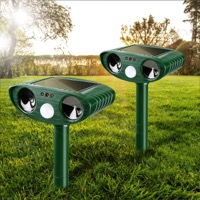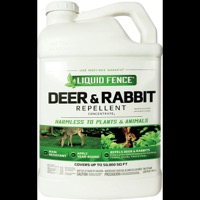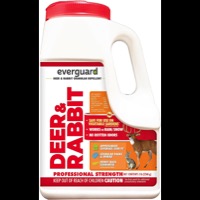How to get rid of Rabbits
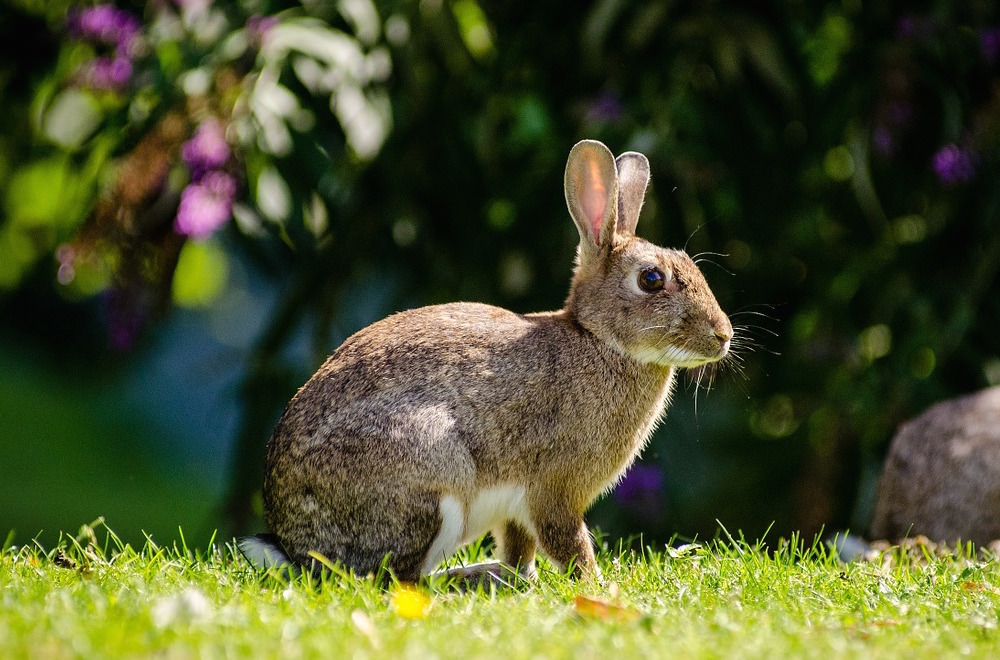
By Sigmund Daughty, Expert Reviewer for Repellent Guide
published: Aug 11, 2017 | updated: Aug 11, 2017
How to get rid of rabbits shouldn't have to be a daunting challenge. However, unfortunately, it is indeed a daunting challenge if you want to do it the humane way. Of course, rabbits are a nuisance, but this article aims to educate and deliver tips for safe, effective and responsible removal of rabbits from your yard.
While rabbits are cute fuzzy creatures that everybody loves to watch on cartoons, however, not everybody has the luxury of thinking these critters are cute, harmless creatures. Rabbits are the enemy of gardeners, farmers and landscapers. Rabbits are a serious challenge for these types of folks that may their living off the land. What rabbits eat causes serious financial challenge to farmers and gardeners, not just with loss of potential revenue, but with time too. If the rabbit eats up vegetables and fruits, it takes time for the next growth to mature. Rabbits love anything green and leafy.

A rabbit’s diet primarily comprises of flower bulbs, plant roots, shrubs and some parts of trees. Rabbits also love snacking on any of the fruits, vegetables or herbs that you have growing in your garden. Home owners hate how rabbits dig annoying holes in their beautifully manicured lawn or even under the house and porch for their burrows which can be conducive to severe damage.

If you have a rabbit problem that you want to take care of, here are some suggestions to help you get rid of rabbits. Firstly, you also have to understand how to recognize the signs too.
How to recognize the signs of rabbits in your yard
Vigilance is important. Recognizing the signs of rabbits in your yard is important so you can figure out the proper action to take. Rabbits are especially dangerous as they will seek to eat the tender growth of newly emerging plants usually in the spring. During the summer, they will eat broad-leafed weeds, clover, grasses, leaves, shoots, roots, fruit, berries,vegetables. In winter, rabbits will eat bark of trees and shrubs, buds, twigs, blackberry and raspberry canes bushes. Rabbits have a great number of natural predators and they may be difficult to actively observe. However, it's not uncommon to see rabbits in broad daylight when they're in an unthreatening environment and some gardens are simply overrun with rabbits.
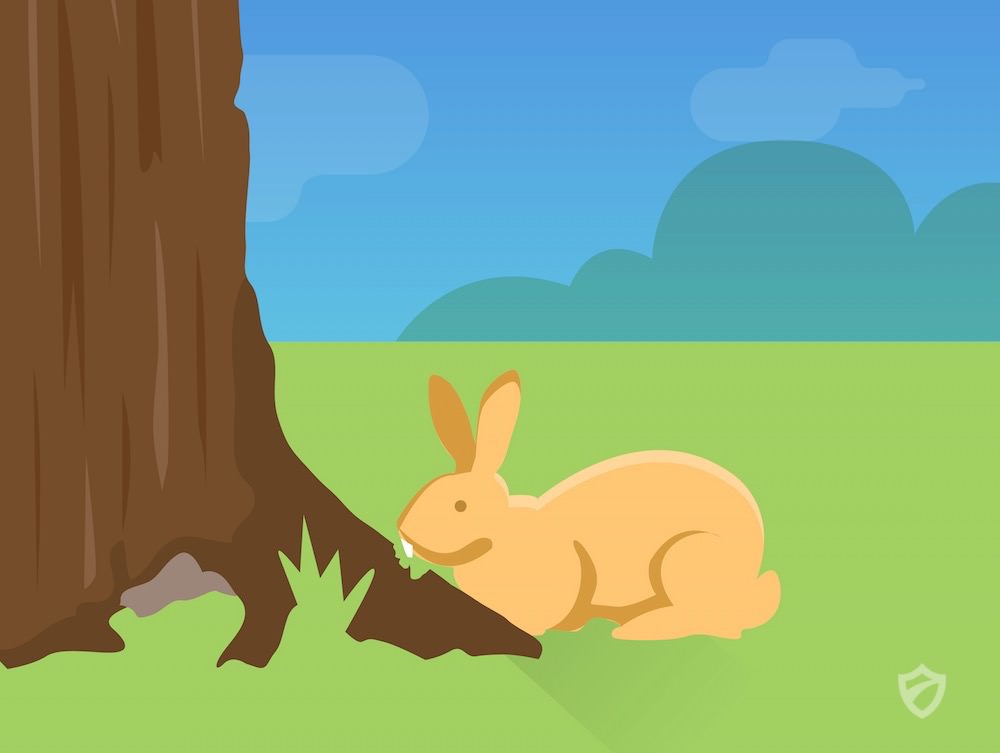
In addition to seeing noticeable damage on plants you may also observe droppings from rabbits. Rabbit pellets are about the same size and shape as a pea. They can also appear scattered or in little piles.
Rabbit damage on plants.
Try checking out the leaves and stalks that have been left behind. Usually, rabbits will nibble plants down to the ground. Due to the strength and precision of a rabbit's sharp front teeth, the leaves that are left will seem cleanly cut as if trimmed with scissors. Compare this to deer damage. Deers tear at leaves differently, leaving behind ragged edges.
Rabbit damage on trees and shrubs.
Rabbits adore your garden during the winter. Due to the absence of tender, new growth, rabbits resort to gnawing on trees, twigs and shrubs. The bark of young trees are especially prone to rabbit damage. As trees mature and the bark thickens, the trees become less desirable. Rabbits may consume the bark on trees from the ground up to about 20". They can also gnaw the bark in patches or even completely girdle the tree. Obvious rabbit damage on twigs and shrubs look like clean cuts at a 45 degree angle. If the damage is way over two feet from the ground, you may be in the deer territory.
Fencing
For obvious reasons, fencing has served as a highly effective means of removing rabbits, not to mention, most humane one as well. Consider fencing off your entire yard, garden and perhaps even your most precious individual plants to protect an important investment. Growing plants requires hard work, planning and time, it behooves you to do what you can to protect your precious assets from these pesky rabbits. Any type of fence ought to get the job done. The point is not so much what type of fence you use, but how you set it up. Rabbits are smart little creatures, they will find ways to outsmart your fence if it's not constructed correctly and effectively. It's important to ensure the fence is buried at least a foot underground with at least a foot above ground. A white picket fence will suffice or you can opt for a wire mesh fence if budget is an issue.

If you have the budget for it, consider electric fences, that will really send a shock to the rabbits. Electric fencing, though more expensive and a bit fussy to maintain, is a good investment, especially if you also have woodchuck problems. Don't install an electric fence if you or your neighbors have small children because it could curl their hair in a very unnatural way, if you catch the drift.
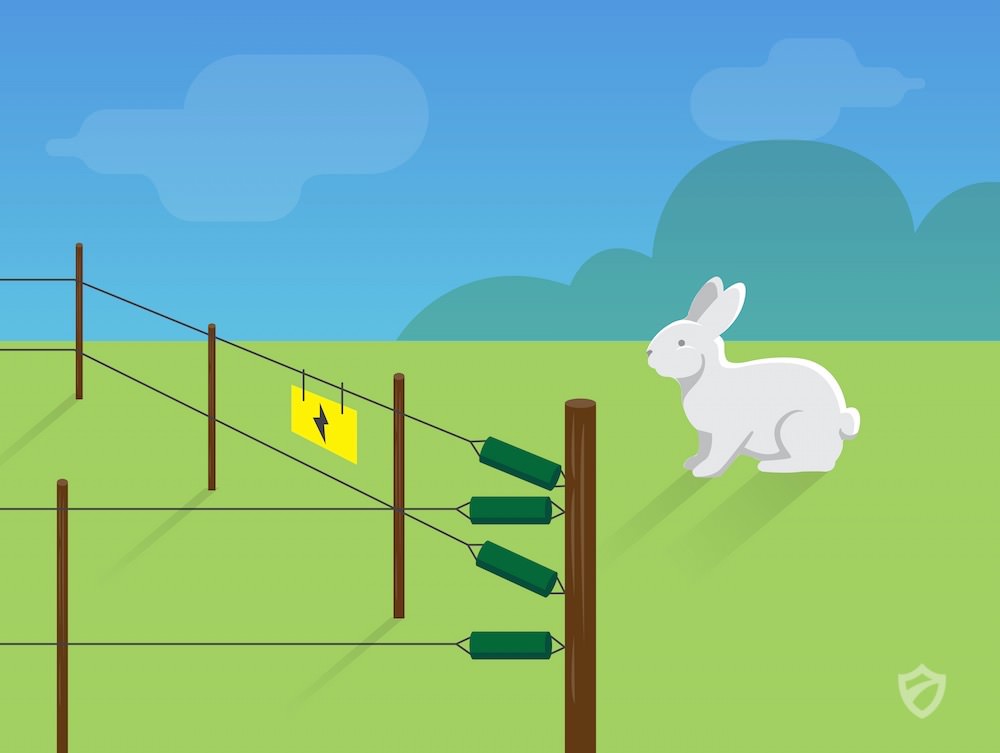
Fencing needs to be strong and regularly checked for damage. Furthermore, fencing is not always an option from an aesthetic view, however, you need to explore all your options thoroughly. While on this most significant topic of fencing, we should also mention that building the best fence ever seen does nothing if the rabbits have already taken up residence inside your yard already. Therefore, before you spend money and valuable time putting up your fence, go the extra mile to make sure that there are no rabbits already in your yard before you construct the fence. You will save yourself a big hassle indeed!
Trapping
Another effective way or getting rid of rabbits in your yard is by trapping. As you can probably imagine there are both lethal and live traps available at many hardware and garden stores. However, we strongly encourage staying clear of any lethal traps. Check out the safe traps you can use, then plant some type of bait like a sizzling steak to entice the rabbit. Proceed with caution, rabbits also have a sixth sense when it comes to outsmarting humans, get rid of any human scent or else may not fall for your trap. Be sure to check the traps every day and when you do succeed in catching the critter, try relocating it to an area that is a long way away from your home, at least ten miles away. Place a cloth sheet over the trap to help prevent additional trauma to the animal during transportation. Once you reach your release point, lift the sheet away from the trap door, unlock the door, and walk away from the trap. Don’t mess with the trap or jiggle the trap until the rabbit has left willingly.
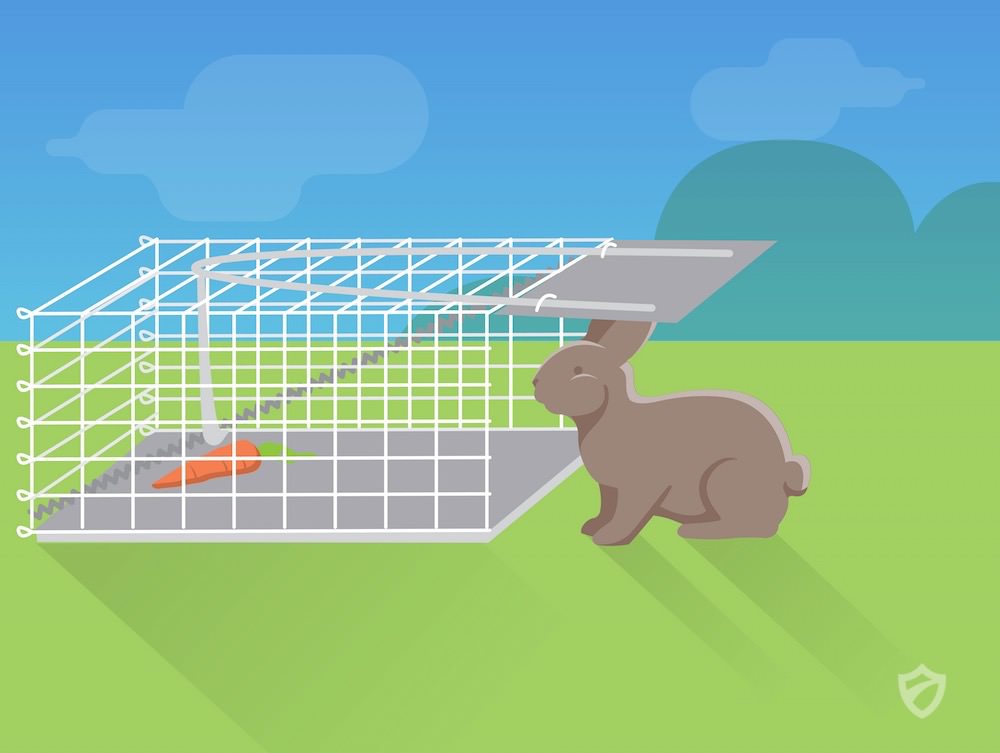
There are numerous rabbit traps on the market today, but most live traps like those made by Havahart or Cooperseeds function in much the same way. Check out some basic tips for trapping rabbits with a live cage trap.
Rabbit traps should be washed with soap and water or with bleach and water to get rid of any human smells on the traps, and to get rid of any urine or defecation left in the trap by previously trapped rabbits. Handling the traps afterwards should be done with gloves to prevent oils from your hands being left on the traps.
Traps are best left in areas where rabbits seek shelter or food. Putting a trap out in the middle of your lawn is likely to be less effective than leaving the trap near some bushes or a garden. Use common sense and your instincts when deciding where to lay the trap.
Monitor the trap often. You don’t want to leave a rabbit or any other animal you may have accidentally captured out in the elements for too long. You’re not trying to traumatize the animal; you’re trying to remove it to be a better location where it will find a better quality of life outside of the city.
Using Repellents
If there are plenty of other food choices around, rabbits may be deterred from eating your garden plants by spraying it with granular repellents, Garlic Clips or fish emulsion. However, you should also be aware that if the rabbits have already grown fond of the crop, or limited in choice because of your area, then repellents may not turn out as effective. However, repellent sprays can be effectively utilized to break a feeding cycle and give young plants enough growing time to get ahead of the rabbits. Using repellents is also rigorous work, it requires putting in the necessary effort because most repellents need to be re-applied every few days, and particularly after heavy rainfall. You can buy effective rabbit repellents on Amazon like Rabbit and Groundog out or Liquid Fence 310 Deer and Rabbit Repellent Just Pump and Spray. I Must Garden Rabbit Repellent is also highly recommended. Folks seem to like this repellent formula because it does not smell offensive and won’t harm the animals. Rabbits just don’t touch any plants sprayed with it.
If you are up for an adventure, consider using Plantskydd - it's indeed an excellent repellent. Take note that this particular product consists of dehydrated porcine and/or bovine blood that needs to be hydrated by mixing in a watering can. When applied to vegetation, Plantskydd appears like blood and coats and discolors vegetation, and may attract scavengers, butterflies and house flies, but it has proven very effective against those pesky rabbits. You may also find that the Bobbex and Liquid Fence rabbit repellents carry slightly unpleasant odors, however, it should issipate quickly upon drying. Rabbit Stopper and the Bonide products don't seem to come with unpleasant odors, so they make for good options as well. For the most part, rabbit repellents are rather comparable in price.
For those who are feeling especially daring, consider testing out repellents like predator urine. Coyote and fox urine are also presumed to be effective for frightening away rabbits for obvious reasons. However, these powerful scents easily picked up by rabbits could wear off rather quickly. This particular strategy would require constant re-application especially after rain as we alluded to earlier. Needless to say, if you happen to reside in a part of the world that gets enormous yearly rainfall, then perhaps this is not the most appropriate method for your situation.
Check out some fungicide sprays that are repulsive to rabbits. Usually, at all costs, they will tend to stay away from the sprayed plants. These sprays possess a chemical known as thiram that is toxic to the rabbits. However, this chemical is also toxic to humans and you cannot spray it on plants that you plan on eating. However, for trees, shrubs and ornamental plants this is very effective for keeping the rabbit away while not affecting the plant.

Rabbits are extremely sensitive to strong odors. They use their sense of smell to constantly seek out edible food sources and detect danger. Some highly effective rabbit repellents can emit a scent that resembles that of a dead or decaying animal, which indicates the presence of a predator and triggers a natural flight response.
Other ways to deter rabbits
It's wise to identify the areas of rabbit activity in your yard so you can pick the solution most suitable to control your specific type of damage. Generally, a rabbit's behavior and habits change with the seasons. There are other interesting ways to get rid of rabbits that might not be known in the mainstream, nonetheless, they may prove effective for your needs. Once you’ve identified when and where your rabbits are causing damage, you can select from the wide selection of rabbit control options available. The best approach for your situation depends on your overall rabbit density and also importantly, the particular season. Rabbits are persistent creatures and in many cases need a combination of different strategies to ensure long-term success.
It might also be a great time to mention that getting rid of rabbits in itself is not an exact science. What works for one person may not work for the other. After all, just as humans are planning to get rid of rabbits, the rabbits themselves are also thinking about how to beat the humans at their own game too. Therefore, it may seem like the entire process of getting rid of rabbits is some kind of cat and mouse game, yes it is, only this around it's a human and rabbit game. Other recommended methods may depend on your lifestyle, personal preferences and of course, overall budget.
Make your garden less inviting to rabbits.
Rabbits will only live in areas that provide cover from predators. Therefore, this entails they will live under low-growing shrubs, in brush piles and in tall grasses and under porches, sheds and other structures. Make it a fun family project to clean up brush piles. Consider keeping tall grasses mowed and figure out how to best block access under structures. You can also introduce plants in your yard that rabbits are not as likely to eat.
Man's best friend
Why not finally yield to the request of the kids wanting a dog in the house. Some people take full advantage of the chance to leave a dog in their yard to scare off pesky rabbits. Just the mere presence of a dog in the area may be enough to keep rabbits away. However, you of course have to deal with the expense and maintenance of a dog to get rid of rabbits from your yard.
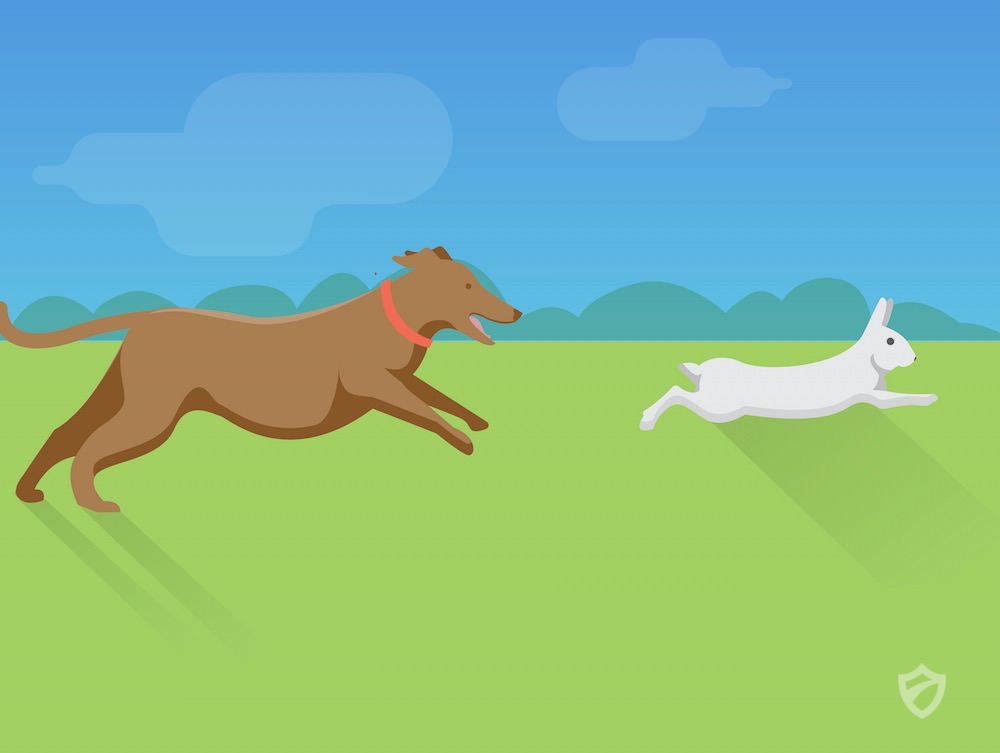
Scare and Ultrasonic devices
Depending on your overall budget, perhaps it's time to get a little creative. Anything that can be used to deter rabbits ought to be considered, within reason of course. Maybe you can experiment with water scarecrows, fake snakes and owls just to name a few. Furthermore, you can incorporate aluminum pie pans and ultrasonic devices as highly effective tactics to try and frighten rabbits away from your property. Again, we need to stress the importance of vigilance. Even though you may succeed in fooling rabbits for some time, after a while, they may catch on to your gimmicks as eventually rabbits might get used to these devices and are no longer scared by them. As a result, constantly learning and tweaking your techniques is a must.
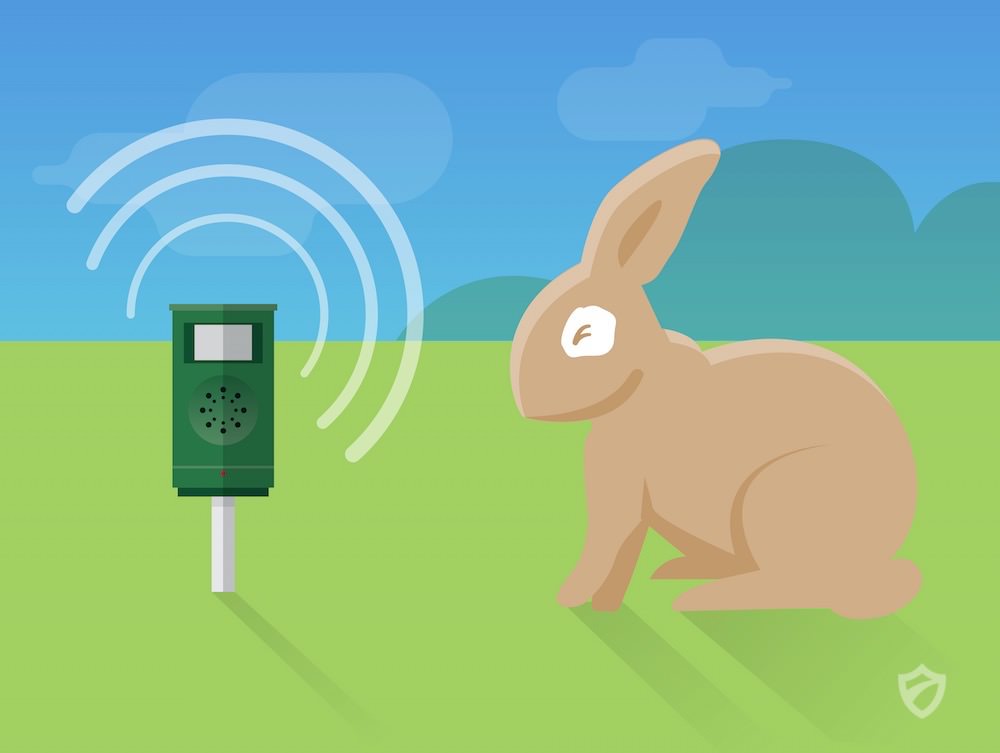
Dried blood
This tip might seem a little strange, but, apparently it can work wonders. Consider scattering some dried blood meal throughout your yard. Dried blood meal is basically uncooked meat that is shriveled up. The smell is so unpleasant to the rabbits' olfactory senses that they will not go near your precious produce. You can find dried blood meal at your local garden store.
Hardware cloth
You may be surprised to discover that hardware cloth works as a fantastic deterrent. Some people use this technique with awesome success. Try wrapping the hardware cloth around the base of bushes and trees that are susceptible to damage. This material is annoying to rabbits, and they probably will not put in the effort of gnawing through it.
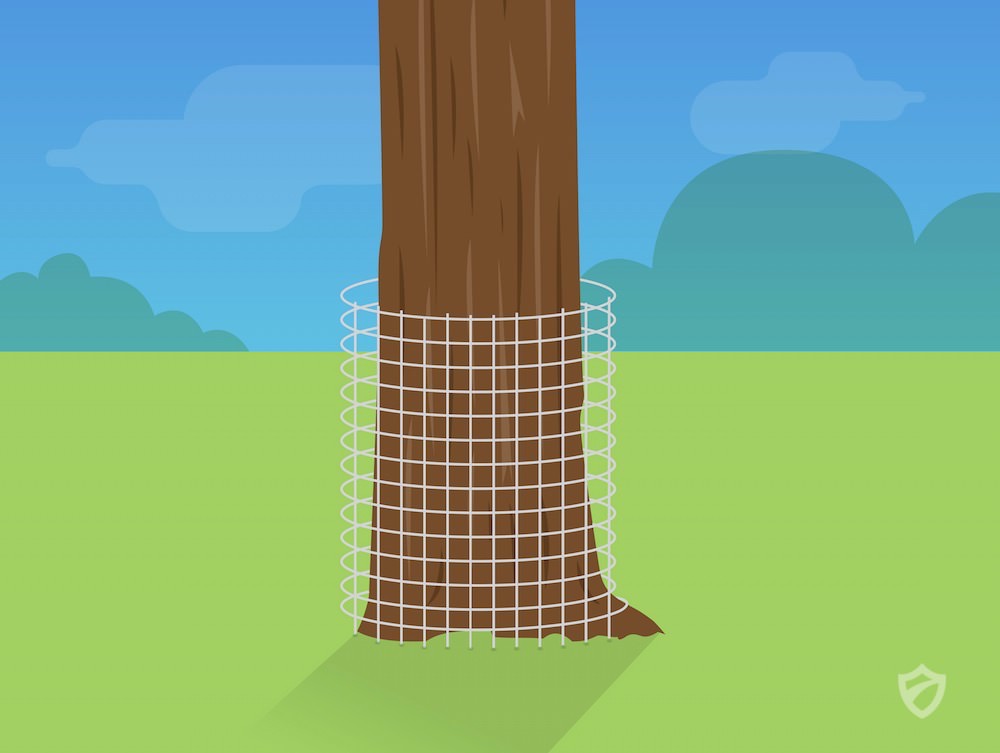
Here's a side note about hardware cloth, in actuality it's not cloth, at all, but rather galvanized wire screen that comes in rolls. Nobody in those super hardware stores ever knows what hardware cloth is, so just try asking the store employee where the chicken wire is kept. Usually, you will find that the hardware cloth is always next to the chicken wire for some reason. Hardware cloth is generally sold in two different gauges or thicknesses. Snap up the heavier gauge. You'll also require a pair of tin snips to cut it and gloves in order to handle it.
Electronic Repellents
Set up a no-trespassing zone by installing an electronic repellent, which scares away approaching rabbits with sudden bursts of water. Electronics are chemical-free. Electronic repellents are terrific solutions to repel even the most stubborn rabbits and can be tried out from Spring through Fall.


